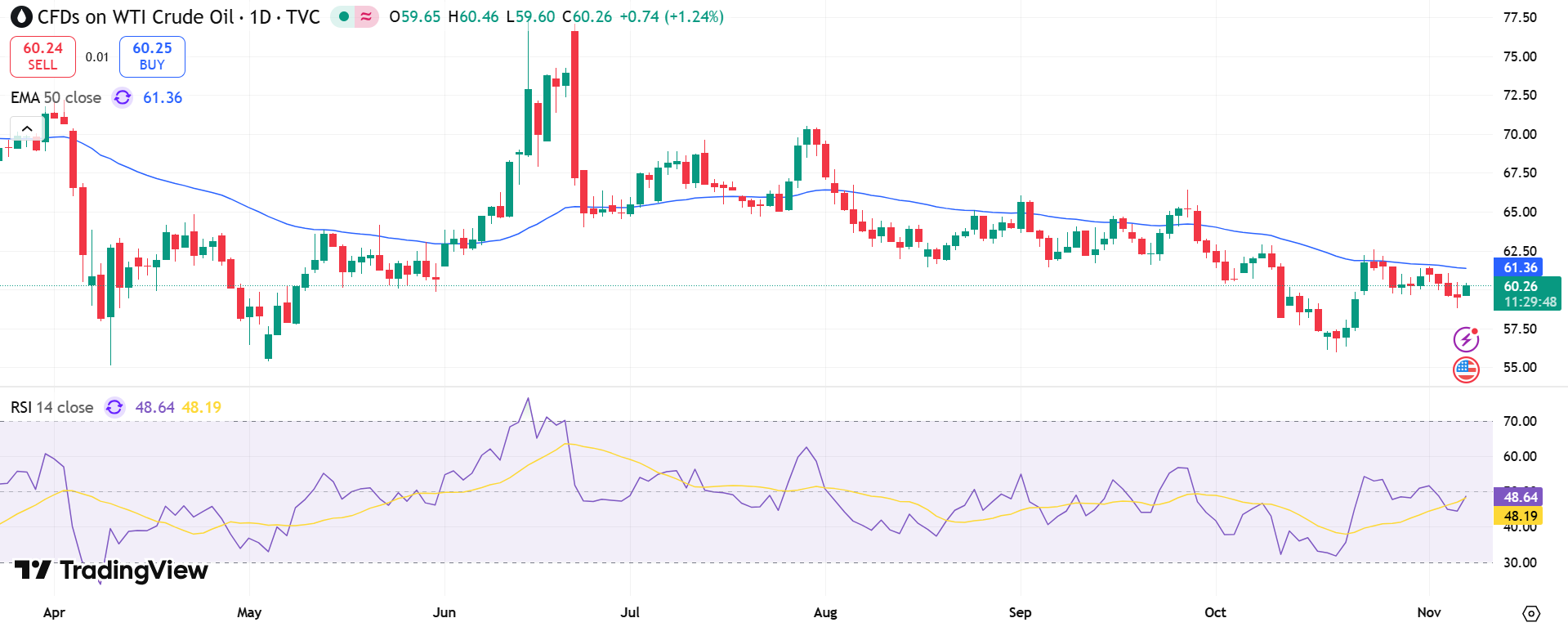Oil prices rebounded slightly on Friday, supported by short-term bargain buying after three straight days of losses. However, the broader trend remained weak as oversupply concerns and slowing U.S. demand kept pressure on the market.
Brent crude futures rose $0.60, or 1%, to $63.98 a barrel by 09:04 GMT, while U.S. West Texas Intermediate (WTI) gained $0.61, or 1%, to $60.04. Both benchmarks remain on track for weekly declines exceeding 1.5%, reflecting a fragile market struggling to balance rising output against uncertain consumption.
Analyst Ole Hvalbye of SEB noted, “The market continues to weigh a rising oil surplus against mixed macroeconomic signals.” His comments highlight the persistent disconnect between growing supply and fading industrial demand.
An unexpected U.S. crude inventory build of 5.2 million barrels, reported by the Energy Information Administration (EIA), reignited fears of a global glut. The data showed higher imports and weaker refinery runs, even as gasoline and distillate inventories fell.
U.S. Shutdown and Strong Dollar Weigh on Crude
Investor sentiment also took a hit from the prolonged U.S. government shutdown, now the longest in the nation’s history. The disruption has slowed economic activity and delayed key data releases, clouding forecasts for energy consumption.
Market analyst Tony Sycamore of IG Markets said, “Risk-aversion flows have strengthened the dollar and dampened oil demand expectations.” A stronger U.S. dollar typically makes oil more expensive for holders of other currencies, curbing global demand.
Additional pressure came from reduced air traffic, as the Trump administration ordered flight cuts due to staff shortages. Meanwhile, private sector reports pointed to a weakening U.S. labor market, adding to recession concerns.
Key short-term drivers:
- Rising U.S. crude stockpiles (+5.2 million barrels)
- Stronger U.S. dollar amid risk aversion
- Record-long government shutdown dampening demand
OPEC+ Output and Sanctions Shape Outlook
The OPEC+ alliance announced a modest output increase for December while pausing further hikes through early 2026 to prevent a supply glut. Still, Saudi Arabia moved to cut prices for Asian buyers, signaling softer demand across key markets.

European and U.S. sanctions on Russia and Iran continue to disrupt global energy flows, particularly to China and India, the world’s top importers. Chinese customs data showed October crude imports up 2.3% month-on-month and 8.2% higher year-on-year, reaching 48.36 million tons—a sign of refinery resilience despite macroeconomic headwinds.
Adding to geopolitical tension, Swiss trader Gunvor withdrew its bid for Lukoil’s foreign assets after the U.S. Treasury labeled the company a Russian proxy. According to Vanda Insights, the move underscores Washington’s intent to strictly enforce sanctions on Russian energy giants.
As the week closes, oil markets remain caught between temporary gains and structural oversupply risks—leaving traders wary of further volatility ahead.


